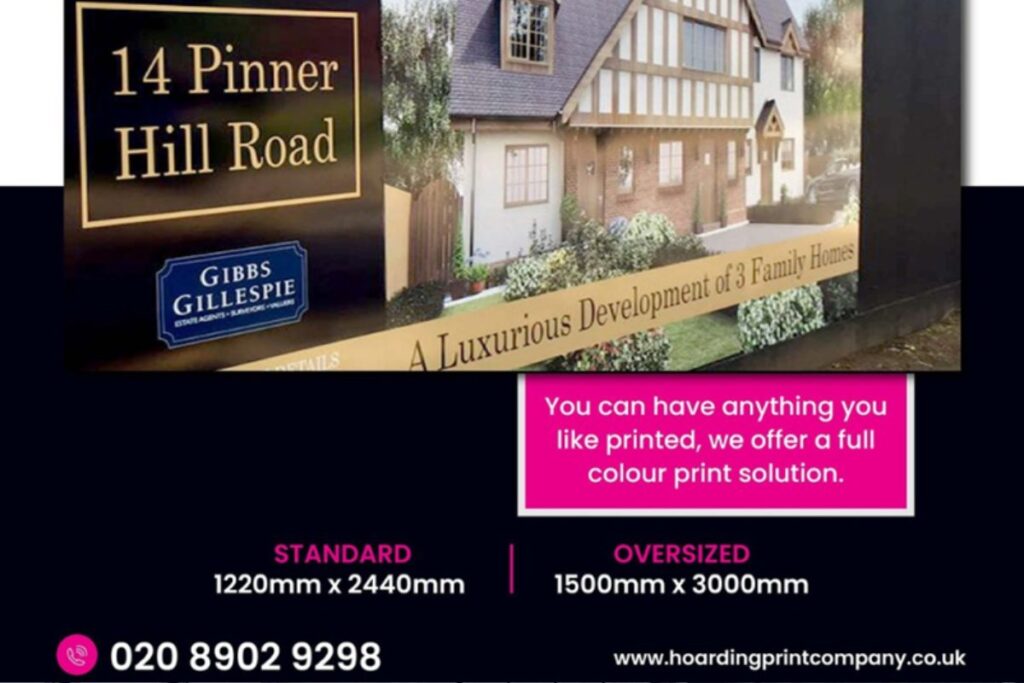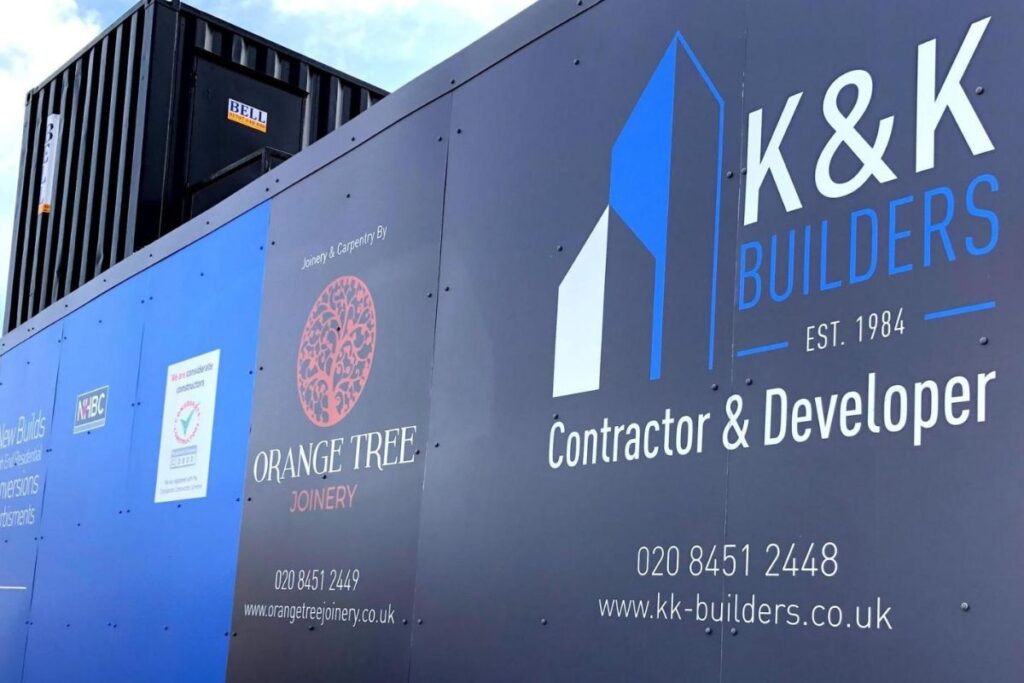Construction sites are a menace, to say the least, with noisy machinery, towering cranes, and dust worsening the pollution. They disrupt a smooth urban life, causing undue detours in traffic and marring the landscape with ugly hoardings.
However, of late, there has been a new trend shift in the construction realm where creative hoardings are being used to transform sites of inconvenience into visually appealing spaces. Far from being mere barriers blocking the site off for safety, hoardings are now doubling up as urban artwork. This means, that aside from functionality, they deliver aesthetic value to the city while also acting as a reliable means for brands to spread their message.
Here is a deeper look into how creative hoardings are changing the urban landscape.
The Emergence of Artistic Hoardings
Back in the day, hoarding construction served one purpose – to enclose a work site and keep the public away for safety. Today, they have grown to become a potential canvas for creative expression. Open-minded city planners and township developers are now diversifying their field of thought to extract more out of what was once deemed a safety precaution. For the same reason, they are now collaborating with graphic designers, artists, and creative printing teams to turn boring, bland plywood wall barriers into vibrant artwork, murals, and out-of-the-box branded experiences.

A not-so-average hoarding today serves a myriad of purposes.
- Safety – The primary duty of safety, preventing the public from having access to sites under construction.
- Aesthetic value – In place of dry, uninspiring walls, they offer a vibrant and visually appealing view, treating the public to engaging aesthetic artwork and in turn, brightening the streets.
- Brand promotion and marketing – Builders can use urban hoardings to advertise their brand offerings and showcase the future of the project, promising an exciting avenue with interesting graphics and engaging elements.
- Community engagement – Creative hoardings also offer a chance for local artists and designers to showcase their talent while also helping brand owners spread their message, making it a collaborative community project.
Types of Construction Hoardings

Depending on the level of aesthetic appeal and durability required by brand owners and their budgets, there are a few different types of hoardings from which to choose.
PVC Foam Boards
PVC Foam Boards are comparatively lightweight, affordable, and moderately durable. They are best used for projects with tight budgets and fewer requirements for heavy-duty finishes. For the same reason, they are preferred by brands that prioritise quick and effective hoardings in construction as opposed to premium aesthetics and complex graphics.
Aluminium Composite Panels
Aluminium Composite board offer a more premium alternative to PVC foam boards and are hence preferred by companies that seek long-term application and higher aesthetic appeal. They are also more durable and suitable for higher-quality prints and graphics, making them an excellent option for prioritised brand focus over economic constraints. Additionally, they offer better versatility when it comes to lighting as they are compatible with low-power LED illumination as well, unlike PVC options.
PVC foam boards and Aluminium composite boards are the two primary types of hoardings used in construction. Aside from these, a few other less common options are:
- Steel hoardings – More resilient and suitable for extensive construction projects
- Timber hoardings – Sturdy and sustainable
- Concrete hoardings – Most durable, but more expensive and suitable for high-profile projects.
- LED hoardings – Come with LED lighting elements for safety and dynamic displays
- Mesh hoardings – Made out of wire mesh and suitable for limited-time projects.
When choosing the material and type of hoarding in construction, it is important to consider various factors including the purpose, the duration of the project, and the budget. Brands operating on a higher sustainability quotient may also consider the carbon footprint it leaves.
Partnering with a thoughtful and comprehensive printing company will help you take care of the majority of these aspects under one roof.
Hoarding Printing Company is one such comprehensive service provider offering a variety of options for brands looking to add aesthetic value to conventional construction hoardings. They provide complete customisability in size and lamination options as well.
Sustainability: An Added Value
In addition to being aesthetically elevating and driven by purpose, creative construction hoardings today also fulfil the growing demand for sustainability. With environmental issues increasing at an alarming rate, many developers and partnering printing companies are turning towards recyclable and reusable materials or using green elements in the making of hoardings, such as participating in conserving initiatives or using plant-based designs, etc. Once the proposed project is complete, either the whole or parts of the boards can be repurposed or donated to organisations supporting the arts.
To align with the sustainability requirements of brands printing companies follow several approaches, like:
- Using eco-friendly printing materials and ink that help reduce the carbon footprint while also providing a polished and modern finish
- Creating living walls by integrating live plants and other forms of greenery into urban construction spaces
- Partnering with local artists and schools to let them showcase their work and promote community engagement
For example, Hoarding Printing Company offers living green walls to bring a vertical garden to life at construction sites, which not only improves air quality but also provides aesthetic appeal. They are also FSC Certified, which means their supplies are sourced only from responsibly managed forests.
Wrapping Up
Hoardings in construction have come a long way. From being mere barriers at construction sites disrupting the average urban life to elevated artwork beautifying modern landscapes, hoardings have taken a delightful creative turn. Developers are now partnering with printing companies and artists to create visually appealing and sustainable hoardings in PVC as well as aluminium composite boards, transforming the way cities view construction sites. It won’t be long before all cities embrace this trend and make it the norm.
For high-quality hoardings in custom sizes, laminations, and sustainable materials, contact Hoarding Printing Company.
Author Bio
Nimesh Kerai, the Printing Head at Hoarding Printing Company London, has a proven track record of delivering large format prints of unparalleled quality to customers. He is a technical expert as well as deeply understands the market and trends. His contribution to the company’s growth is undeniable. He often loves to share his extensive industry knowledge and market insights with a larger audience through interesting blog posts.
https://www.linkedin.com/company/hoarding-print-company
Images supplied












